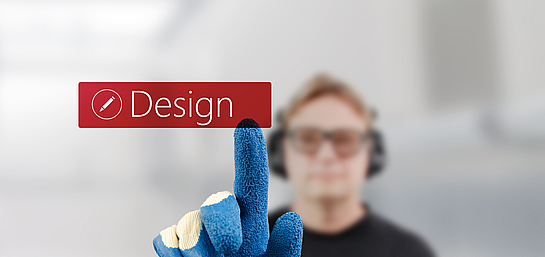Make Your Touch Interaction Natural
In natural interaction, we take advantage of the knowledge of what each person brings from their natural environment, such as: the existing knowledge about physics from the everyday experience, etc. In the design of (multi) touch interactions, we play with this knowledge, because natural operation is much more intuitive.
Here are some recommendations to make your touch interaction more natural:
Prefere Direct Manipulation Of Objects
Buttons or menus are usually not natural objects. In reality, users grasp objects in space, move or rotate them. This natural interaction can be reproduced very well with modern multitouch techniques. Here one prefers to work with direct manipulation of objects instead of using separate controls to manipulate them.

Display Real Objects If Possible
The use of real objects is more useful than the use of buttons or menus. If possible, corresponding virtual images of real objects should be displayed. This can be, for example, images, 3D objects or the digital representation of any objects that the user knows from his real environment.
Work With Graphical Representations
Pictures are faster than words. Therefore, you should always check whether the corresponding information can also be displayed graphically. But take into consideration: content before chrome, only show what the user need
Give Immediate Feedback

Use the principle of anchoring, that is: objects or information sticking to the finger, that touches the screen, and can be dragged, rotated or zoomed. They then move in the same direction as the finger. Furthermore, a quick and immediate response to the display is indispensable when gestures are used. Any delay (delayed reaction or jerking). For that reason, in addition to the used touch technique, you should pay attention to the graphic representation and to the smooth transition effects of the screen contents.
Consider adding physicality and realism, i.e.
- Purposeful animations
- Effects of inertia and acceleration
Make The Touch Area Big Enough
With regard to the minimum size for touch surfaces, there are different specifications. The VDI standard VDI/VDE 3850, for example, recommends the following minimum sizes.

Other guidelines, for example from Apple or Microsoft recommend smaller minimum sizes. Ultimately, this also depends on the used touch technology and the intended use scenario. For example, list items that are only selected can be made smaller, whereas buttons that immediately trigger a function must be made larger.



